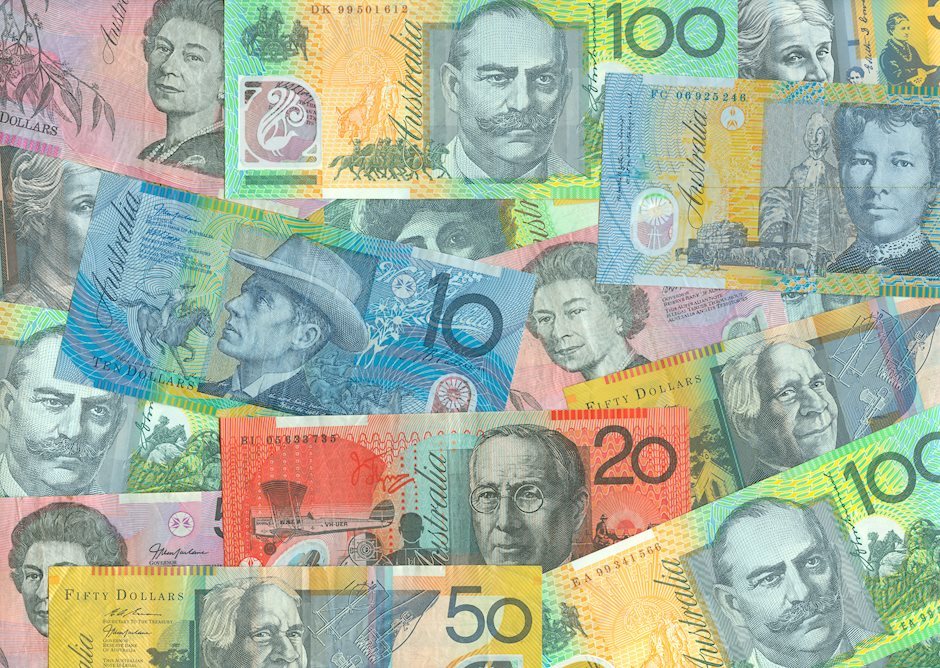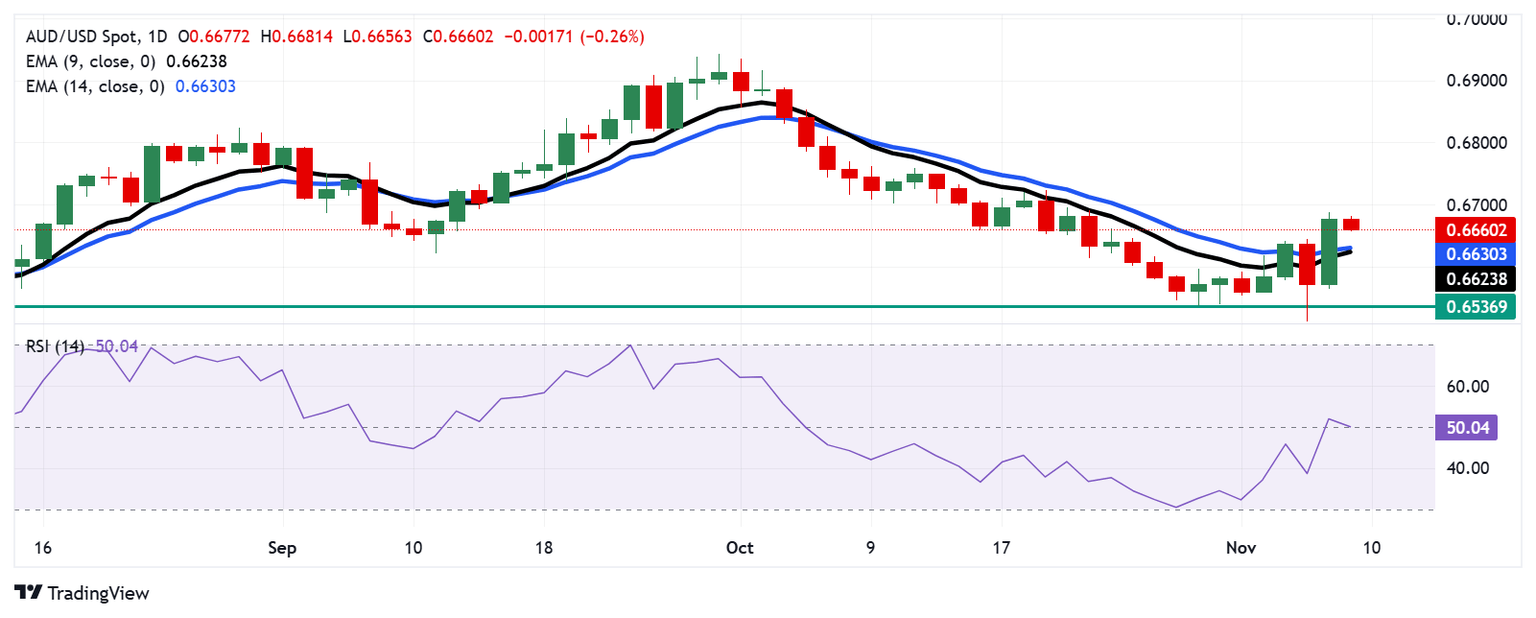Australian Dollar loses ground due to Trump tariff threat
- The Australian Dollar depreciated as traders adopted caution due to fears over Trump’s tariffs on Chinese goods.
- The AUD/USD pair appreciated more than 1% on Thursday after the Fed announced a 25 basis point rate cut.
- Fed Chair Jerome Powell emphasized that the central bank will continue to assess economic data to decide future rate directions.

The Australian Dollar (AUD) struggles against the US Dollar (USD) on Friday. The downside risks for the AUD/USD pair remain due to the concerns about Donald Trump’s proposals to raise tariffs on Chinese goods, given that Australia is one of the largest exporters to China.
The AUD/USD pair gained ground by more than 1% as the US Dollar (USD) faced challenges following the Federal Reserve's interest rate decision in the previous session. Additionally, the Aussie Dollar received support from China's trade balance, which was better than expected and released on Thursday.
The Federal Open Market Committee (FOMC) lowered its benchmark overnight borrowing rate by 25 basis points (bps) to a target range of 4.50%-4.75% at its November meeting on Thursday. Investors are now anticipating the release of the preliminary US Michigan Consumer Sentiment, which is expected later on Friday.
Federal Reserve Chair Jerome Powell indicated that the central bank is proceeding with interest rate cuts, given the ongoing tightness of monetary policy. Powell emphasized that the Fed will continue to assess economic data to decide on the "pace and destination" of future rate changes, highlighting that inflation has been gradually slowing toward the Fed's 2% target.
Daily Digest Market Movers: Australian Dollar struggles amid Trump’s tariff threats
- The US Dollar Index (DXY), which measures the value of the US Dollar against the other six major currencies, improves to near 104.50 with 2-year and 10-year yields on US Treasury bonds standing at 4.20% and 4.33%, respectively, at the time of writing.
- US Initial Jobless Claims rose to 221,000 for the week ending November 1, according to a Thursday report from the US Department of Labor (DoL). This figure aligned with initial estimates and was up from the previous week’s revised total of 218,000 (originally reported as 216,000).
- China’s trade surplus expanded in October, reaching $95.27 billion year-over-year, surpassing the expected $75.1 billion and the previous $81.71 billion. Exports rose by 12.7% YoY, well above the anticipated 5.0% increase and the previous 2.4% growth. Meanwhile, annual imports fell by 2.3%, exceeding the expected 1.5% decline and contrasting with the previous 0.3% increase.
- Australia’s trade surplus fell to 4,609 million in September, down from an expected 5,300 million and August’s figure of 5,284 million, as reported by the Australian Bureau of Statistics on Thursday. Exports fell by 4.3% in September from the 0.2% decline seen a month earlier. Meanwhile, Imports fell by 3.1% MoM in September, compared to a decrease of 0.2% seen in August.
- The US ISM Services Purchasing Managers' Index increased to 56.0 in October, up from 54.9 in September, exceeding the forecast of 53.8. In contrast, the S&P Global Services PMI registered at 55.0 in October, slightly below the prior reading and the expected 55.3.
- The Reserve Bank of Australia (RBA) decided to hold the Official Cash Rate (OCR) steady at 4.35% on Tuesday, marking its eighth consecutive pause. RBA Governor Michele Bullock reiterated a hawkish stance, emphasizing the need for restrictive monetary policy given persistent inflation risks and a strong labor market.
- Australia's Judo Bank Services PMI improved to 51.0 in October from 50.6 in the previous reading, above the market consensus of 50.6. The Composite PMI climbed to 50.2 in October versus 49.8 prior. Caixin China Services PMI also rose to 52.0 in October from 50.3 in September.
- The TD-MI Inflation Gauge rose by 0.3% month-over-month in October, up from a 0.1% increase in the prior month, marking the highest reading since July and ahead of the RBA's November policy meeting. Annually, the gauge climbed by 3.0%, compared to the previous 2.6% reading.
- China’s Commerce Minister Wang Wentao met with Australia’s Trade Minister Don Farrell on Sunday. China expressed hopes that Australia will continue enhancing its business environment and ensure fair and equitable treatment for Chinese companies.
Technical Analysis: Australian Dollar trades above 0.6650, 14-day EMA
The AUD/USD pair trades near 0.6660 on Friday, showing a shift from bearish to bullish momentum on the daily chart. The pair has moved above the nine- and 14-day Exponential Moving Averages (EMAs), signaling short-term upward momentum. Furthermore, the 14-day Relative Strength Index (RSI) has crossed above the 50 mark, suggesting an ongoing bullish sentiment.
On the upside, the AUD/USD pair may approach the region around the psychological level of 0.6700.
In terms of support, the AUD/USD pair may test the 14-day EMA of 0.6630, aligned with the nine-day EMA of 0.6624. A break below the latter could lead the pair to navigate the area around its three-month low at 0.6512, followed by key psychological support at 0.6500.
AUD/USD: Daily Chart
Australian Dollar PRICE Today
The table below shows the percentage change of Australian Dollar (AUD) against listed major currencies today. Australian Dollar was the weakest against the Japanese Yen.
| USD | EUR | GBP | JPY | CAD | AUD | NZD | CHF | |
|---|---|---|---|---|---|---|---|---|
| USD | 0.18% | 0.10% | -0.06% | 0.17% | 0.35% | 0.19% | 0.11% | |
| EUR | -0.18% | -0.07% | -0.23% | -0.02% | 0.15% | 0.02% | -0.07% | |
| GBP | -0.10% | 0.07% | -0.14% | 0.06% | 0.25% | 0.09% | -0.00% | |
| JPY | 0.06% | 0.23% | 0.14% | 0.22% | 0.40% | 0.24% | 0.16% | |
| CAD | -0.17% | 0.02% | -0.06% | -0.22% | 0.18% | 0.03% | -0.06% | |
| AUD | -0.35% | -0.15% | -0.25% | -0.40% | -0.18% | -0.15% | -0.25% | |
| NZD | -0.19% | -0.02% | -0.09% | -0.24% | -0.03% | 0.15% | -0.09% | |
| CHF | -0.11% | 0.07% | 0.00% | -0.16% | 0.06% | 0.25% | 0.09% |
The heat map shows percentage changes of major currencies against each other. The base currency is picked from the left column, while the quote currency is picked from the top row. For example, if you pick the Australian Dollar from the left column and move along the horizontal line to the US Dollar, the percentage change displayed in the box will represent AUD (base)/USD (quote).
Australian Dollar FAQs
One of the most significant factors for the Australian Dollar (AUD) is the level of interest rates set by the Reserve Bank of Australia (RBA). Because Australia is a resource-rich country another key driver is the price of its biggest export, Iron Ore. The health of the Chinese economy, its largest trading partner, is a factor, as well as inflation in Australia, its growth rate and Trade Balance. Market sentiment – whether investors are taking on more risky assets (risk-on) or seeking safe-havens (risk-off) – is also a factor, with risk-on positive for AUD.
The Reserve Bank of Australia (RBA) influences the Australian Dollar (AUD) by setting the level of interest rates that Australian banks can lend to each other. This influences the level of interest rates in the economy as a whole. The main goal of the RBA is to maintain a stable inflation rate of 2-3% by adjusting interest rates up or down. Relatively high interest rates compared to other major central banks support the AUD, and the opposite for relatively low. The RBA can also use quantitative easing and tightening to influence credit conditions, with the former AUD-negative and the latter AUD-positive.
China is Australia’s largest trading partner so the health of the Chinese economy is a major influence on the value of the Australian Dollar (AUD). When the Chinese economy is doing well it purchases more raw materials, goods and services from Australia, lifting demand for the AUD, and pushing up its value. The opposite is the case when the Chinese economy is not growing as fast as expected. Positive or negative surprises in Chinese growth data, therefore, often have a direct impact on the Australian Dollar and its pairs.
Iron Ore is Australia’s largest export, accounting for $118 billion a year according to data from 2021, with China as its primary destination. The price of Iron Ore, therefore, can be a driver of the Australian Dollar. Generally, if the price of Iron Ore rises, AUD also goes up, as aggregate demand for the currency increases. The opposite is the case if the price of Iron Ore falls. Higher Iron Ore prices also tend to result in a greater likelihood of a positive Trade Balance for Australia, which is also positive of the AUD.
The Trade Balance, which is the difference between what a country earns from its exports versus what it pays for its imports, is another factor that can influence the value of the Australian Dollar. If Australia produces highly sought after exports, then its currency will gain in value purely from the surplus demand created from foreign buyers seeking to purchase its exports versus what it spends to purchase imports. Therefore, a positive net Trade Balance strengthens the AUD, with the opposite effect if the Trade Balance is negative.
Author

Akhtar Faruqui
FXStreet
Akhtar Faruqui is a Forex Analyst based in New Delhi, India. With a keen eye for market trends and a passion for dissecting complex financial dynamics, he is dedicated to delivering accurate and insightful Forex news and analysis.


















